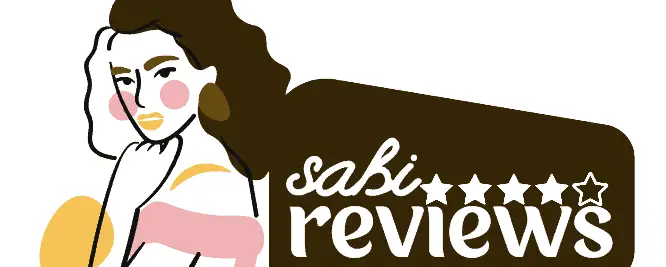Exposing The $6,400 Subsidy Scam Ads: Not a Real Government Health Benefits
The internet has been flooded with lots of Ads offering US residents $6400 subsidy in health benefits. However, it’s all a scam. After visiting the websites and filling the requirements, people don’t receive a single dime in health benefits. Rather they’re coerced into signing up for a shady loan company.
Have you come across an Ad on Youtube or Facebook offering you a $6400 subsidy? This article shed a light on the $6400 subsidy scam, redflags that stand out, and how to protect yourself from this viral scam.

How Does The $6400 Subsidy Scam Work?
The scam starts with an Ad using AI generated videos of celebrities promoting the scheme. It tells people to visit or click on a website link to claim their $6400 subsidy. When people visit the website they’re made to provide their personal information including their SSN and some basic information like age, income, and health coverage.
The scammers would then proceed to use the identities for fraudulent purposes. Either they sign you up to shady loan companies and collect loan in your name, or they sell it to the dark web. Of course, there’s really no $6400 subsidy to be claimed. Nov. 1 through Jan. 15 is the open enrollment period for Americans to get health coverage through the Affordable Care Act, ACA. Internet scams use this time of year to prey on those struggling financially with health bills or switching insurance plans.
The $6400 subsidy scam is an identity theft scheme whose aim is to steal people’s confidential and personal information.
6400 Subsidy Scam – Red Flags That Stands Out
Uses AI Generated Content
The ads and videos showing Joe Biden, Oprah Winfrey and Joe Rogan are all generated by Artificial intelligence. The scam uses this false advertising to entice victims into thinking the subsidy is legit. When you look closely, you can see their lips don’t match what the voice is saying. Same thing for the one that used the faked Biden voice urging people to “hurry up” similar to this other $6,400 subsidy scam.
Recently Established Website
The websites often used by this scam are all recently registered. For example, reliefgurucenter.com have been active for just 2 months. There is no legit news reports or reviews confirming the identity of the company.
Not Sponsored By The Government
As opposed to their claims of an approved government subsidy, the scam websites do not show any proof that the government gave them the green light to hand out these subsidies.
Unexplained Funding
It keeps mum about where they’re getting the cash for these subsidies. Legit government programs usually spill the beans on funding sources, but with the websites it’s a mystery.
Basic Application Process:
The application form is too easy. Legit government programs usually ask for more details in their applications, so this quick one might seem a bit fishy.
Dubious Information:
The sites always confesses that the info is more of an “ADV tutorial,” not actual news.
What To Do If You’re a Victim of The 6400 Health Subsidy Scam
If you’ve unfortunately fallen victim to a health subsidy scam, here are crucial steps to take:
- Stop all communication with the scammers.
- File a complaint with your local law enforcement agency and report the scam to the authorities. In the U.S., you can report to the Federal Trade Commission (FTC) through their website.
- If you’ve shared financial information, contact your bank or credit card company. Explain the situation and inquire about any steps you can take to protect your accounts.
- Share your experience with friends and family to raise awareness.
How To Spot A Fake Subsidy Scam
Being Popluar Doesn’t Mean It’s Legit
They usually have numerous likes and shares, this doesn’t guarantee legitimacy. Scammers manipulate social proof to make it look authentic.
Always In A Hurry
If the ad says you’re missing out or the deadline is approaching, do not click on it. Scammers play on emotions, and the idea of a $6,400 subsidy can be captivating. If an offer becomes too emotionally charged, take a step back its not legit.
Claims Of Free Money
When you stumble upon promises of “free government money” that sound too good to be true and lack any real evidence, it’s unrealistic, unproven, and probably just a mythical tale.
No Verifiable Reviews
When there are no actual reviews by people who have benefitted from these subsides on their official website and popular websites, then stay alert, don’t fall for it.
How To Protect Yourself From Health Subsidy Scams
Stick to Official .gov Sites.
Go to real government sites for legit health subsidy programs. Don’t take shortcuts. Verify and ask questions before signing up
Be Skeptical of Too Good Offers
If it sounds too good to be true or they’re demanding money fast, stay skeptical. This is usually a format employed by scammers so you would not think twice about their offer.
Talk to the Experts First
The moment you come across this offer, Reach out to health and human services agencies for the real deal. If you are interested in applying for a subsidy, go to healthcare.gov to see what you can apply for.
Conclusion
While the promise of easy cash is enticing, falling for this scam could cost more than money. Victims of the $6400 health subsidy scam may endure identity theft, damaged credit, and emotional distress. Recovering from fraud is time-consuming too. Don’t let the lure of quick cash lead you into the subsidy scam maze. Stay alert!
